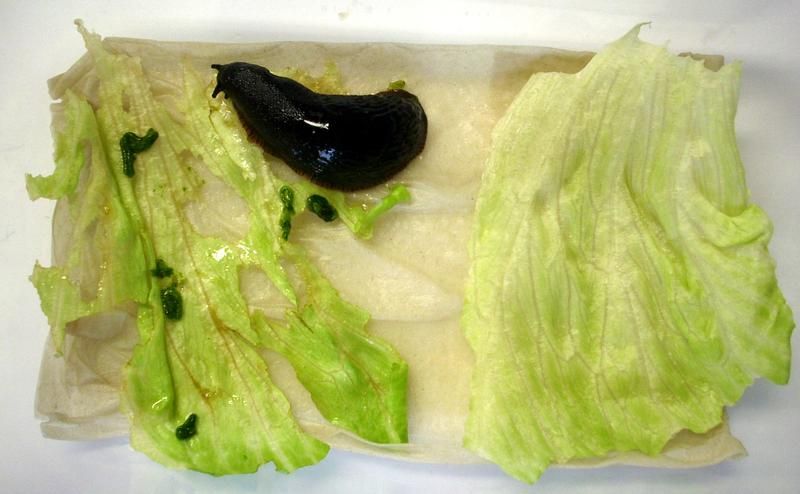Chemists of Jena University discover what spoils the appetite of slugs
Slugs are every gardener’s enemy: They can destroy overnight, what he has sown and looked after lovingly. But snails don’t like all plants in the same way – they shun moss. Why is that so? This question was already posed by the botanist and founder of Chemical Ecology, Ernst Stahl, at the end of the 19th century in Jena. More than a hundred years later chemists from Friedrich-Schiller-University Jena (Germany) found a possible answer: “Moss is capable of building up chemical compounds that protect them from enemies,” says Prof. Dr. Georg Pohnert of Jena University. Ernst Stahl had come to the same conclusion after tests. Now the holder of the Chair of Instrumental analytics and his team succeeded in identifying these compounds and in proving their pest repellent properties beyond doubt.

Iceberg lettuce belongs to the favourite dishes of slugs. If, however, the lettuce is treated with oxylipins from moss, the slug will reject it (right leaf).
Martin Rempt/FSU
What spoils the snails´ appetite for moss are so called oxylipins. “These are compounds which are formed from unsaturated fatty acids by pathways involving oxidation when the moss is being damaged,“ Prof. Pohnert explains. The Jena chemists analysed the moss “Dicranum scoparium”, also known as ordinary Broom Fork-moss that can be found in nearly all European woods. During their research the scientists found many formerly unknown compounds, among them new, very unusual oxylipins.
“Motivated by the observation that in other organisms, oxylipins often work directly as defence metabolites or are part of the regulation of defence mechanisms, we have analysed the impact of these compounds more accurately,” says Prof. Pohnert, who, along with his group, so far focused on the chemical defence strategies of marine organisms. To prove the retardant impact of oxylipins against snail damage, Jena scientists engaged two well known “experts” - the slugs “Arion lusitanicus” which were being offered two salad leaves. One leaf was treated with oxylipins that had been extracted from moss; the other salad leaf had only been sprayed with the solvent methanol. “Almost without exception the snails choose the leaves that didn’t contain oxylipins, even when we diluted the substances a thousand times in comparison to the concentration in moss,” reports Martin Rempt, a postgraduate in Pohnert´s team.
Prof. Pohnert thinks that these results could be used in the future to develop an organic repellent against slugs and other pests. That would be an ecological alternative to so-called “Schneckenkorn” (Snail Poison) that very often poses a potential danger not only for birds and other enemies of snails, but also for pets. The research will be extended to further moss species in the future.
Original publication: Martin Rempt, Georg Pohnert; "Neue acetylenische Oxylipine mit fraßhemmenden Eigenschaften gegen herbivore Schnecken aus dem Moos Dicranum scoparium (p NA)"; Angewandte Chemie 2010, 122
Most read news
Other news from the department science

Get the chemical industry in your inbox
By submitting this form you agree that LUMITOS AG will send you the newsletter(s) selected above by email. Your data will not be passed on to third parties. Your data will be stored and processed in accordance with our data protection regulations. LUMITOS may contact you by email for the purpose of advertising or market and opinion surveys. You can revoke your consent at any time without giving reasons to LUMITOS AG, Ernst-Augustin-Str. 2, 12489 Berlin, Germany or by e-mail at revoke@lumitos.com with effect for the future. In addition, each email contains a link to unsubscribe from the corresponding newsletter.

























































